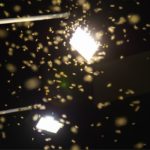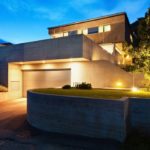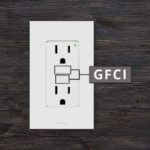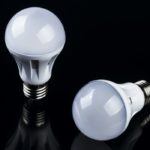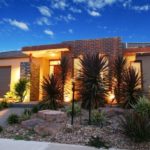Outdoor lights are great for illuminating landscapes, but some many people think they are expensive and use too much electricity. With the advent and widespread use of LED lights, outdoor lighting has become more affordable. LEDs are both energy and cost efficient, but the same cannot be said for traditional halogen or incandescent outdoor lighting.
Electricity consumption by outdoor lights depends on a variety of factors, most importantly the type of bulbs used. Landscape lighting using LED bulbs consume a fraction of the energy halogen bulbs do, and can cost much less. When using LEDs, outdoor lights do not use a lot of electricity.
Apart from the type of bulbs used, the cost of running outdoor lighting depends on the duration of use, power of the bulbs, and electricity costs. Even though these factors may cause the cost of running outdoor lights to fluctuate, the cost of LED lighting will always be lower than the cost of normal incandescent bulbs.
Will My Outdoor Lights Draw A Lot Of Electricity?
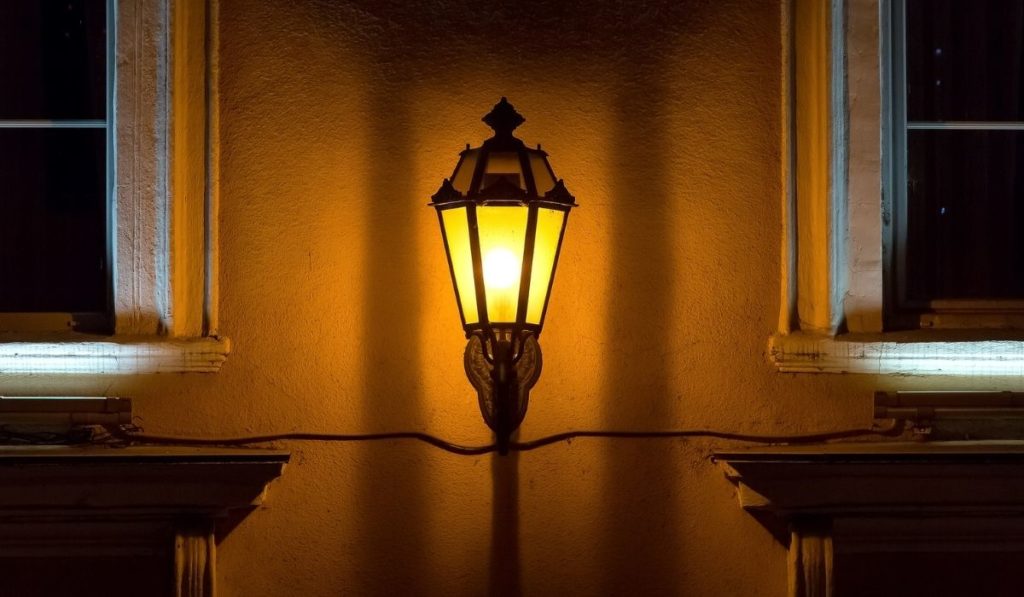
Outdoor lights are often an essential part of landscape design. They illuminate the carefully kept gardens and designed outdoor spaces. Even when unlit, tasteful outdoor lights enhance the beauty of the area just by existing.
However, the illumination and the beauty come at the cost of electricity. How much electricity is drawn by the outdoor lights depends on a variety of factors, such as how much you use them and how energy efficient they are.
Outdoor lights usually use light-emitting diode (LED) bulbs. These are more energy-efficient than standard bulbs. In fact, LED bulbs draw 15% less electricity than incandescent bulbs for the same length of time. Since outdoor lights that have to be lit for prolonged periods of time, LEDs are popular and desirable. They also have a longer life than normal bulbs, meaning the recurrent cost of replacement is reduced.
In addition to LED bulbs, solar-powered lights are also gaining popularity because of their energy efficiency. As solar-powered lights use solar energy (sunlight) to recharge themselves during the day, it makes complete sense to use them for outdoor lighting and keep them lit throughout the evening.
Normal bulbs, LED bulbs, and solar-powered lights will draw different amounts of electricity and incur different costs for lighting up your outdoor space. To calculate a budget and estimate how much electricity your outdoor lights will draw on average, it is safe to assume that you would keep about twenty LED lights running five hours a day in a medium-sized outdoor area.
If we take the average cost of one kilowatt-hour (kWh) to be about 12 cents and each LED bulb to have the power rating of 8-watts, the average monthly cost of outdoor lighting would be $5. This cost is based on the understanding that twenty 8-watts LED bulbs will draw under 18 kilowatts of electricity per month. Compare this to the cost of the traditional halogen bulbs, and you will find that LED bulbs cost at least four times less than the incandescent set-up.
It is a given that outdoor lights will comparably cost you more than the indoor lights. However, how much electricity the outdoor lights draw depends on the type and magnitude of your outdoor set-up. You can have bulbs with higher wattage and save more with LED lights or have the halogen bulb draw more than 15% as much electricity and cost four times more.
How Much Does It Cost To Run Outdoor Lights?
There is no one answer for the cost of running outdoor lights. The cost varies considerably on how large and detailed the landscaping is, but it is guaranteed that energy-saving options cost a lot less than conventional lighting.
The first thing to keep in mind is the cost of electricity, which fluctuates every now and then. When budgeting for the cost of running outdoor lights, it is important to leave space for variability and account for fluctuations in electricity cost. With that said, general estimates for the cost of running outdoor lightings are still useful for managing expectations.
Apart from the fluctuating electricity costs, landscape lighting is pretty affordable if you make the right choices. Generous estimates of moderately-sized landscape lighting show that it costs only $5 per month to run outdoor lighting with LED bulbs. But usually, the cost for most households is even less than our estimates, with average yearly spending on outdoor lighting culminating up to roughly $20.
The cost of running outdoor lights depends on the following factors:
- Wattage of the bulb: Usually 6 or 8 watt bulbs are used for outdoor lighting.
- Duration of use: This varies according to the consumers’ preferences. Some people like having outdoor lights on from dusk to dawn, while others only operate them for 4 to 8 hours every night. On average, outdoor lighting is kept on for 6 hours every night.
- Cost of kWh: The electricity cost of kWh fluctuates every now and then and varies from state to state and region to region. On average, this cost can be assumed to be anywhere between 10 to 15 cents per unit.
All of the above mentioned estimates are based on the assumption that LED lights are used. If not, the wattage of the bulb would increase drastically, as one 8 watt LED bulb is equivalent to a 90 watt halogen bulb. Needless to say, this will bring the yearly cost of running outdoor lights significantly up.
Do Outdoor LED Lights Use More Electricity Than Normal Bulbs?
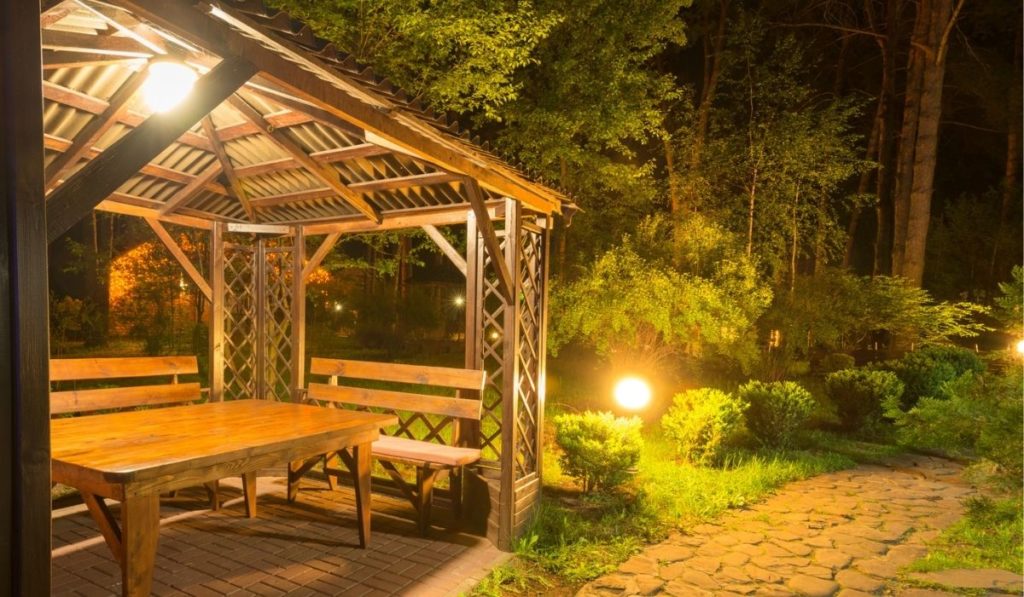
No, outdoor LED lights use considerably less electricity than normal bulbs. In fact, LED lights are so energy efficient that they draw 15% less electricity than normal bulbs.
At the same time, it has been shown that a single halogen bulb costs 5 to 10 times more than its price of purchase over the course of its life. This makes LED lights far more economical and beneficial in the long run, despite their relatively high purchase price.
Because incandescent lights use more electricity and are more expensive than the energy-saving LED bulbs, many countries have completely banned or are phasing halogen lights out in favor of the more sustainable LED lights. This allows governments to reduce national energy consumption and meet sustainability goals.
Therefore, outdoor LED lights are the better option. They use less electricity than normal bulbs and allow for more savings, both monetary and environmental, in the long run.
Do Outdoor Floodlights Use a Lot of Electricity?
Floodlights do not use a lot of electricity anyway because they are not used as often as other lights. But, LED floodlights are cheap because they draw less electricity than normal floodlights. LED floodlights also last longer and are easier to maintain than normal flood lights.
The amount of electricity used by LED floodlights and the cost incurred depends on the intensity of the floodlights. If running from dusk to dawn every day, a 50 watt LED floodlight will cost about $20 per year, as opposed to its equivalent 300 watt halogen bulb which will cost nearly $100. That is approximately five times more.
The same rate of 10 to 15 cents per kWh can be used to calculate how much higher wattage of LED flashlights will cost. The cost and electricity usage of LED floodlights, however, will always be less than halogen or incandescent floodlights.
Furthermore, a LED floodlight has a lifetime of 15 to 20 years, which amounts to nearly 50,000 hours of usage. This means you can depend on an average LED flood light to last you up to 20 years before needing to replace it with a new one.
This, coupled with the low annual cost of running, makes LED flood lights extremely affordable for most landscape lighting enthusiasts.



